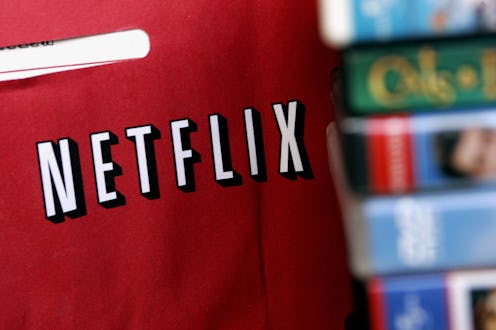Entertainment
This Look Back At Netflix's Early Days Will Blow Your Mind

When internet users head to Netflix.com, they see a sleek logo in the iconic red and white color scheme and the words, "See what's next. Watch anywhere. Cancel anytime." The look, this statement, and the media beast Netflix has evolved into have significantly changed since the company was founded on Aug. 29, 2007. Now, audiences know what Netflix represents: a revolutionary network and lifestyle (hence, Netflix and chill). But what did Netflix look like 20 years ago? It was essentially unrecognizable.
What's now a multi-billion dollar company, with original programming and 104 million members, was once a startup brand with an innovative way to make DVD renting easier. In 1997, Netflix CEO Reed Hastings co-founded the rental service with Marc Randolph, according to CNN. For reference, their biggest competitor was the nostalgic rental company Blockbuster. Rather than having to go to the store and deal with hassles like out-of-stock titles, Netflix offered a DVD-by-mail rental service. From the beginning, the gem of Netflix was its lack of a late fee policy.
In 1998, Netflix's website and online catalogue launched, with 925 titles and a pay-per-rental model, according to Wired. Back then, Netflix offered two DVDs at $4 each for seven days (charging $3 per additional selection and $5 to reserve brand new titles). Even though DVD players ran for $700 at the time, VHS tapes were much too bulky to work for Netflix's vision. Thus, DVD distribution became its thing.
Netflix, stylized as "NetFlix" 20 years ago, originally had a completely different aesthetic. The original Netflix website had a purple color scheme and a "FixFinder" tool to search for available titles. The site promised movies would arrive in two to three days with a prepaid envelope to return them in.
It wasn't until 1999 when Netflix began offering a monthly subscription option (which still holds up today). Holding true to its no-late-fees policy, the service dropped due dates and offered four rentals for $15.95 per month. In the first year, Netflix reportedly gained 239,000 subscribers.
Another perk unique to Netflix came about in 2002, when the company would automatically mail subscribers the next DVD from their web page list upon returns (which also included recommendations based on their rental history). And because ordering selections online was still foreign to so many consumers, Netflix opened 10 satellite distribution centers in the U.S. to up its presence. It wasn't until 2004 when the brand's signature red and white look really kicked in.
In 2007, Hastings arguably revolutionized streaming with Netflix's "added benefit" of delivering movies straight to subscribers' computers. This option, compatible with Windows and Internet Explorer, started out small, with about 1,000 titles, and although they were low-quality, they were streamed much faster than through other platforms. At this point, the average Netflix subscription costed $18/month and included three DVDs at home at any time, 1-day shipping, and 18 hours of free streaming.
Of course, over the last five years, Netflix has significantly boomed into the worldwide entertainment platform it is today. Transforming from a movie rental space to a hub for original programming, it began producing its own original series and films, starting with House of Cards in 2013. From originals like Orange Is the New Black to Stranger Things, and its unlimited "watch anywhere" model, Netflix has become a phenomenon.
Although ordering movies through the mail now sounds ancient, there are still about 4 million DVD subscribers keeping the company's original intent strong (now through the site DVD.com). Netflix's journey is nostalgic and inspiring. In a 2002 interview with Wired, Hastings explained his vision: "The dream 20 years from now is to have a global entertainment distribution company that provides a unique channel for film producers and studios."
Once a site that could barely break even, the platform is now wealthy in cash and members, continuing to change the media landscape one Netflix and chill session at a time.